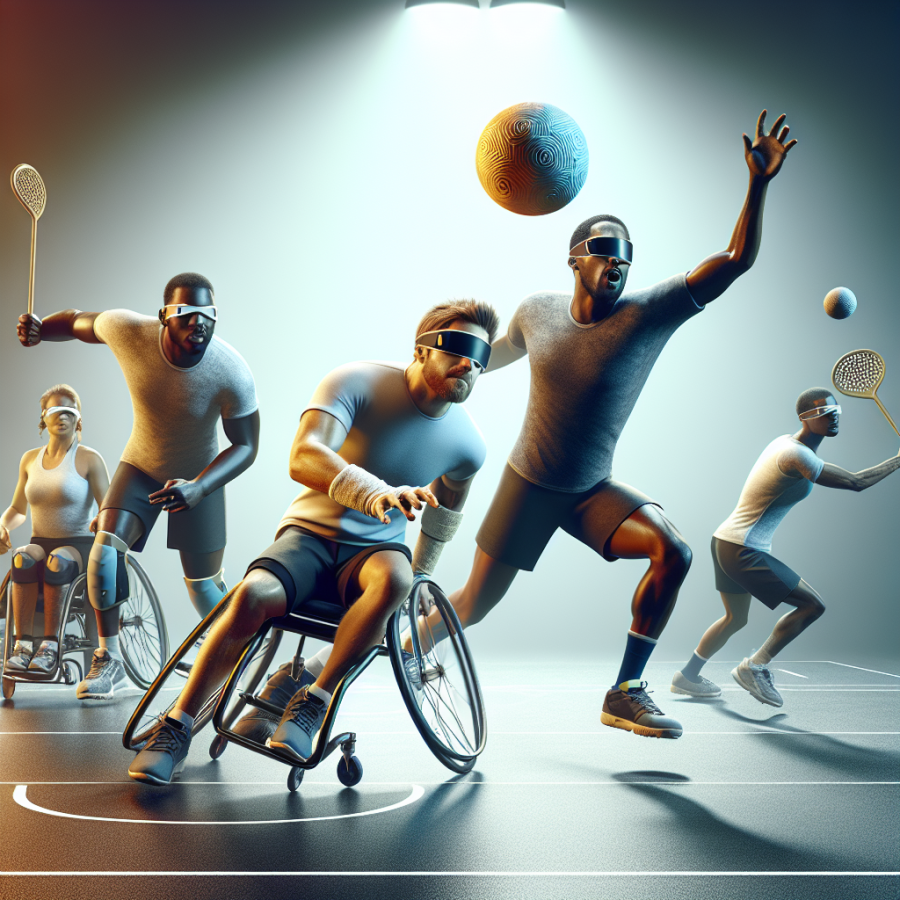Exploring the Origins and Rules of Goalball: A Sport of Stealth and Skill
Goalball is a riveting sport that stands out due to its unique blend of strategy, teamwork, and physical prowess, all crafted to suit athletes with visual impairments. This game's origins trace back to post-World War II Europe, where it was initially devised as a means to assist the rehabilitation of visually impaired war veterans. The game has since evolved into a competitive sport that is both challenging and inclusive, played internationally with standardized rules that govern its play.
The first formal iteration of goalball was introduced in 1946 by Hanz Lorenzen of Austria and Sepp Reindle of Germany, whose collective effort led to the development of a sporting activity that not only aimed to assist in physical rehabilitation but also to promote social integration. It did not take long for goalball to gain popularity, and by 1976, it had been introduced to the Paralympic Games in Toronto, asserting its standing as an official sport for visually impaired athletes.
One of the most distinctive features of goalball is the obligatory use of eyeshades by all players, ensuring a level playing field by neutralizing varying degrees of visual impairment. This aspect underscores the significance of non-visual senses within the game, as players rely heavily on their sense of hearing and spatial awareness to interpret the game as it unfolds.
The game itself is played on an indoor court with dimensions similar to that of a volleyball court. The floor is marked with tactile lines, allowing players to orient and position themselves using touch. Each team consists of three players, and the objective is to roll a ball embedded with bells into the opponents' goal while defensively preventing the ball from entering one's own.
One of the most integral rules of goalball is the silence requirement during play. Spectators and coaches must refrain from making noise, which allows players to listen for the oncoming ball and communicate with teammates. The ball, weighing about 1.25 kilograms, is thrown across the court either by rolling it or bouncing it, with players often diving to block the ball with their bodies.
Goalball matches consist of two halves, each lasting 12 minutes, with a three-minute half-time break. Teams switch sides at halftime, and the game employs a set of rules to govern the conduct of the sport, which includes penalties for noise disturbances, high balls (ones that bounce too high), or long balls (ones that don't touch the opponent's court).
Read also:
Catch Argentina vs Ecuador Live: Streaming & TV Channels
Meet the Elite Athletes: An Insight into the Lives of Goalball Champions
Goalball, a team sport designed specifically for athletes with a vision impairment, showcases some of the most dedicated and talented individuals in the world of sports. These athletes, often unrecognized by mainstream media, exhibit exceptional skill, coordination, and mental strength demanded by this unique game. Despite being unseen heroes themselves, their achievements make for stories of triumph, resilience, and unyielding spirit.
One of the first aspects to understand about these elite athletes is their rigorous training regimen. Goalball players train extensively to refine their spatial awareness and to enhance their acute sense of hearing, both critical for detecting the bells within the ball used during the game. They undertake specialized workouts to improve their reaction times and to build the explosive strength necessary to launch the goalball at high speeds towards the opponents' goal.
The level of strategic thinking in goalball is profound. Athletes must constantly communicate and plan with their teammates to set up effective defenses and craft devious attacking plays. Understanding the opponents' playing style is key, and top players often spend hours analyzing past game footage to gain any advantage they can find.
Diving into the personal lives of these athletes reveals just how much they sacrifice to compete at the highest levels. From strenuous daily training schedules to constant travel for tournaments, the commitment required can be all-consuming. However, for these goalball champions, the thrill of competition and the love of the sport make every sacrifice worthwhile.
Their stories are not just about sporting prowess; they are narratives of empowerment. Many athletes credit goalball with giving them confidence and a sense of community. Through the sport, they have found a platform to excel beyond societal expectations and to challenge preconceptions about individuals with disabilities.
Each goalball champion has a tale that can inspire. Take, for example, the story of a Paralympian who, despite losing her sight at a young age, went on to clinch gold on the global stage. Or the journey of a veteran player who turned to goalball after an accident and found in it a renewed sense of purpose and drive.
Their perseverance through challenges, both on and off the court, reinforces an important message: limitations are but milestones on the road to success. By pushing the boundaries of what is perceived as possible, these goalball athletes serve as role models not just to people with vision impairments but to all who aspire to achieve greatness despite the odds.
The community around goalball is tight-knit, with players often forging lifelong friendships with teammates and rivals alike.




